Brother KR260 ribber was manufactured by Brother in the mid-1980s. This attachment fits only two kinds of bulky-gauge knitting machines, Brother KH260 and Brother KH270. I had a chance to work with the Brother KR260 ribber attached to the punchcard KH260 knitting machine and absolutely loved it! Watch the video of my tests and read the corresponding blog post.
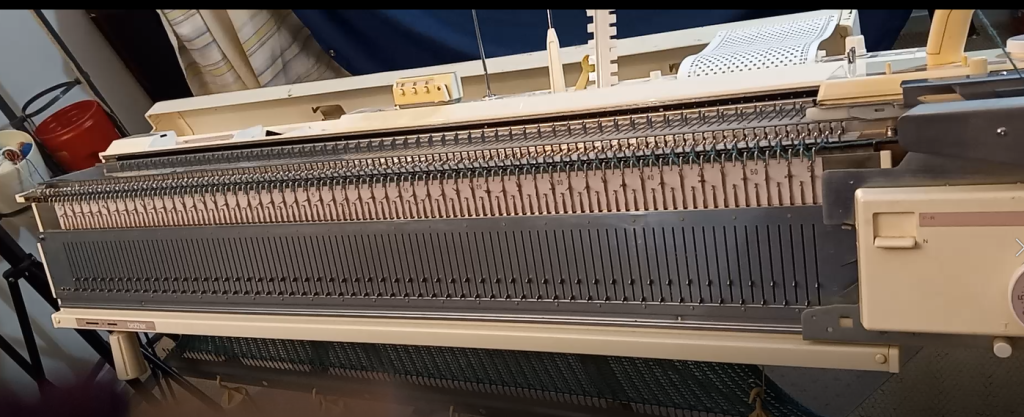
Unlike its earlier counterpart, the KR230 ribber (which matches only the KH230 knitting machine model), the needles for the KR260 ribbers are the same as their machines: they are shorter (by 0.8 mm) than the needles for KH260 and KH270.
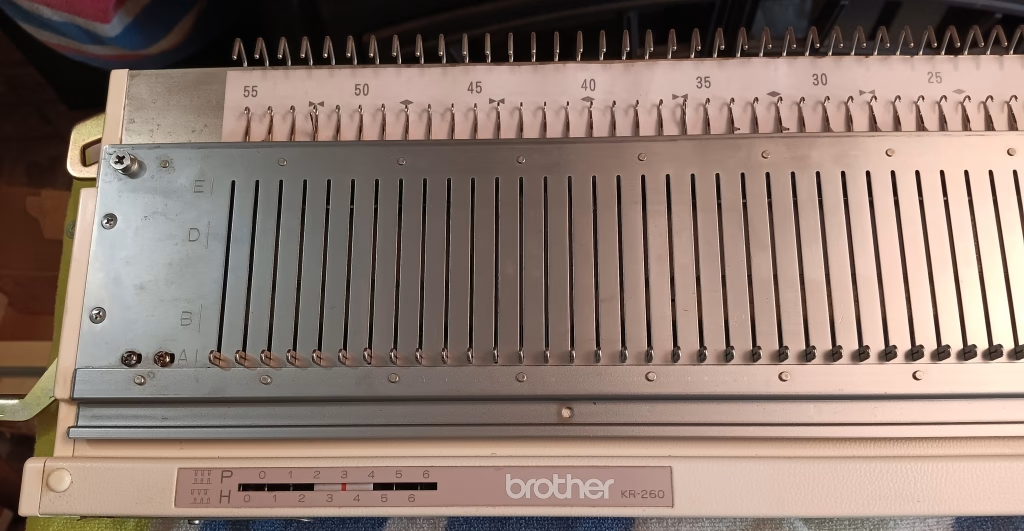
Additionally, KR260 ribber does not have 114 needles (like its matching knitting machines), but 110. It first this discrepancy seemed odd. But after working on the standard machines with their corresponding needles (and both needle beds have the same number of needles), I started to understand why. I even started liking the fact that the KR260 needle bed has fewer needles than the main bed of KH260/KH270 machines. It makes manipulations of the fabric and inserting of the hanging edge weights much easier. For example, when I tested standard ribbers with standard machines in the past, I left out some of the needles on each side to have enough space to insert the hanging weights.
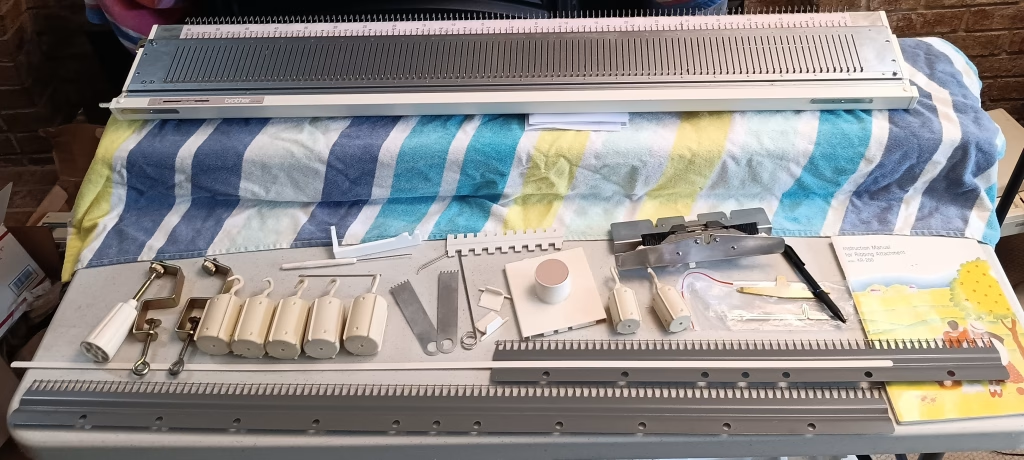
The ribber comes with a standard set of accessories.
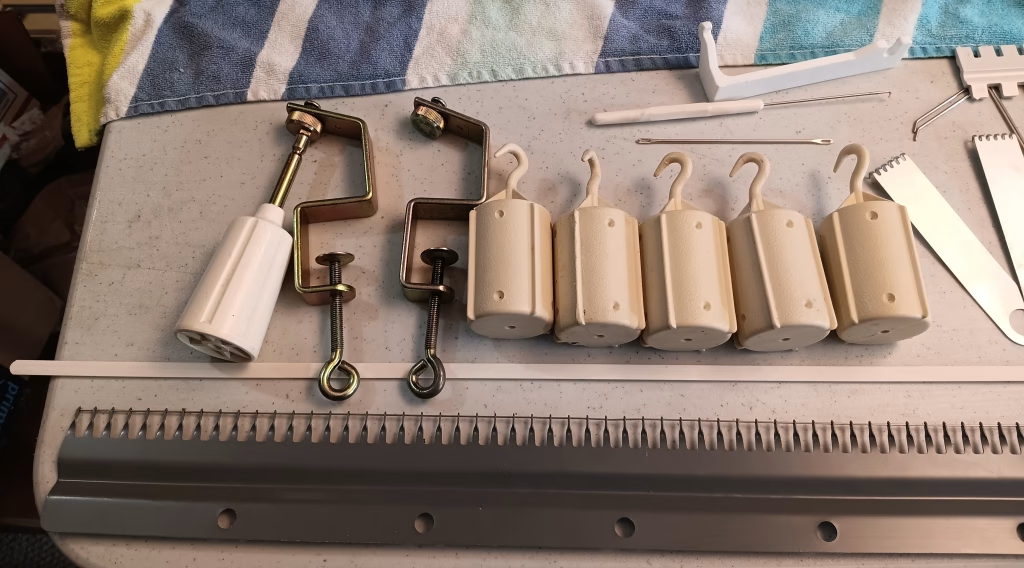
A very unique accessory that I have not seen for other machine/ribber combinations is a D-slider.
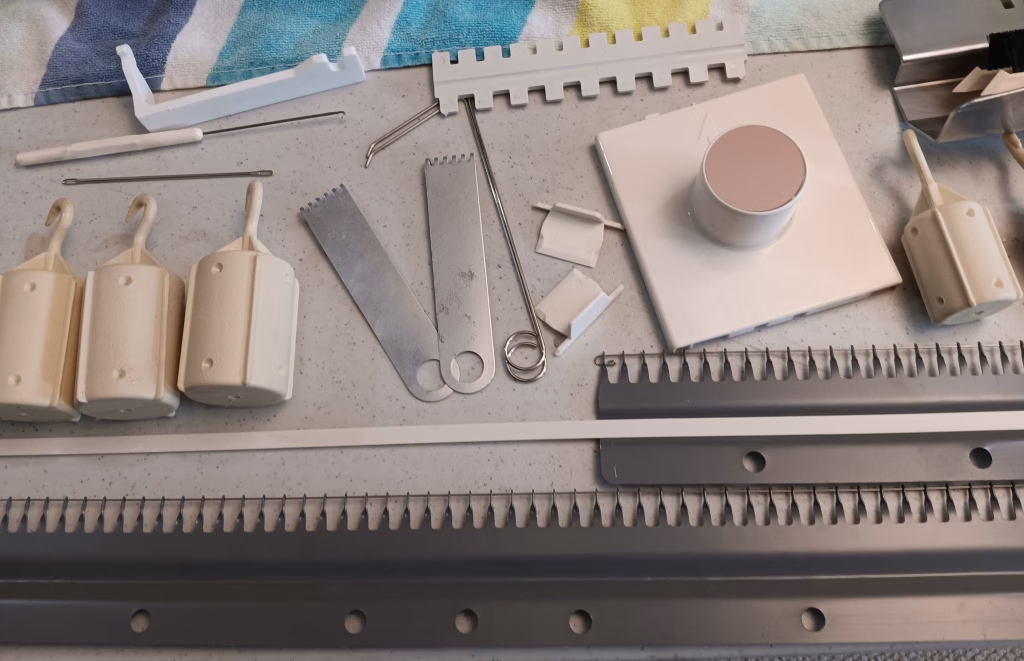
D-slider a small carriage-like tool used to create drop-stitch patterns.
Below are the pictures of the heavy-duty connecting arm of the KR260 ribber from different angles.
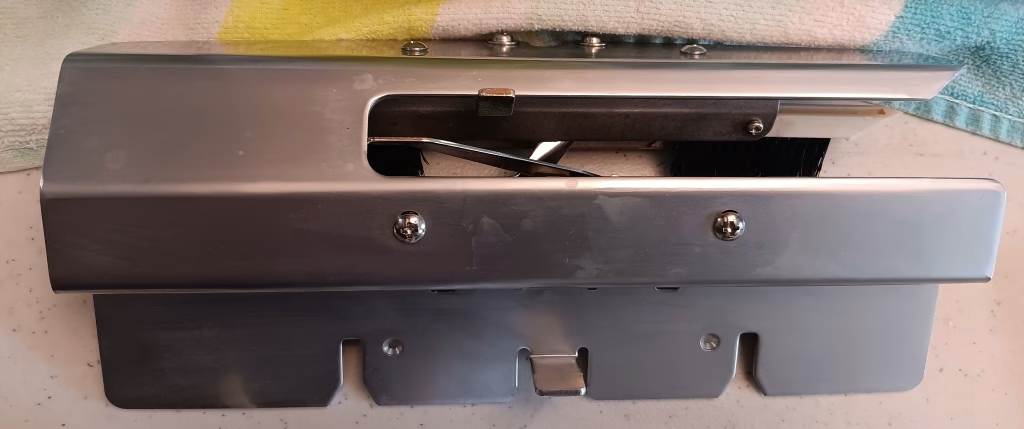
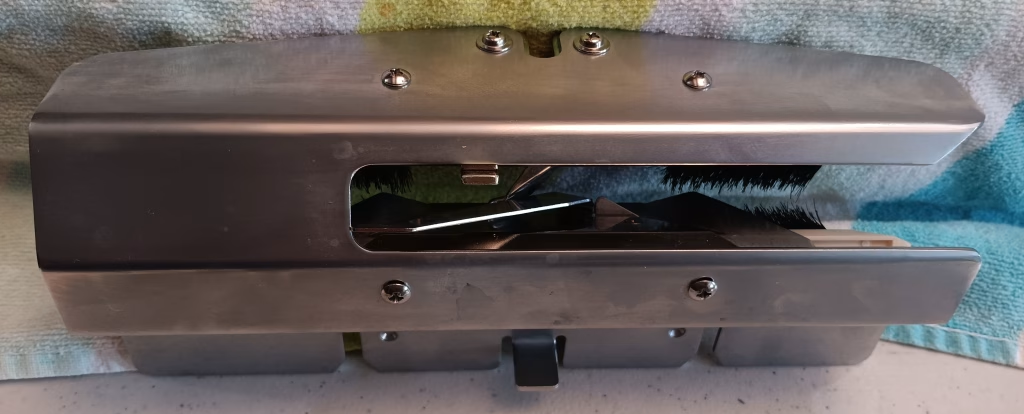
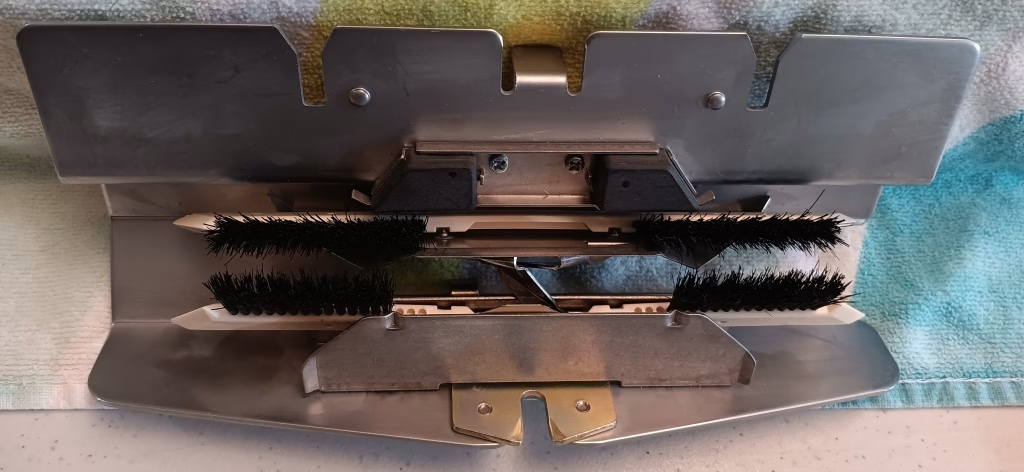
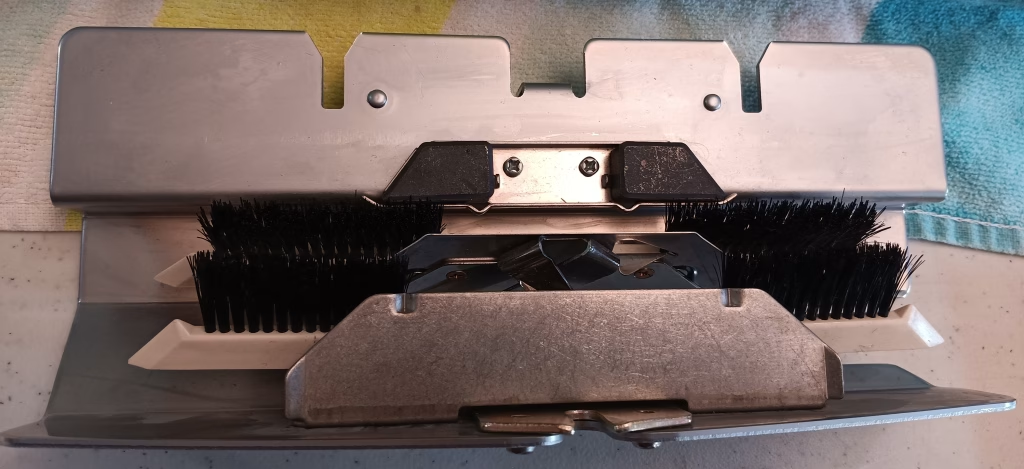
Brother KR260 ribber has very distinct setting plates (picture is coming soon): large (unlike those for standard ribber which are smaller) and the hole for the screw is centered (unlike the setting plates for KR230, in which the whole is shifted to the right/left for the right and left setting plates, accordingly).
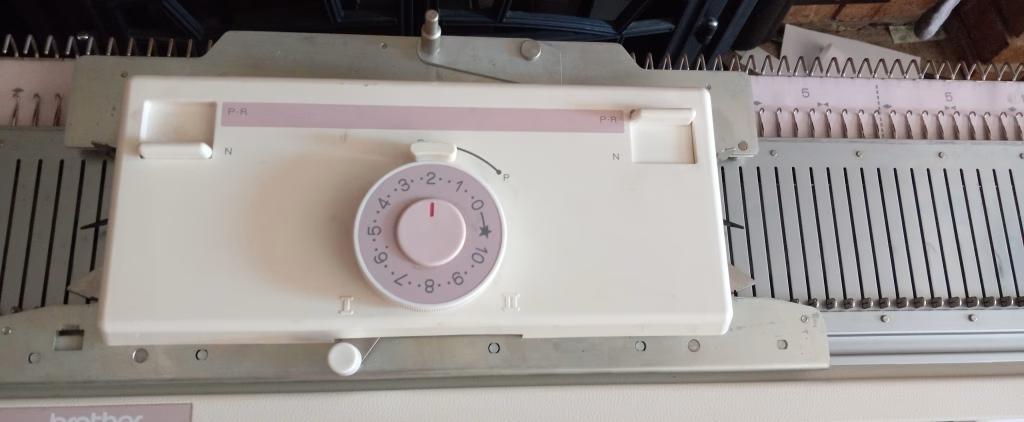
Brother KR260 was also released in an anniversary edition under the (KR260e model name) with the bluish color scheme.
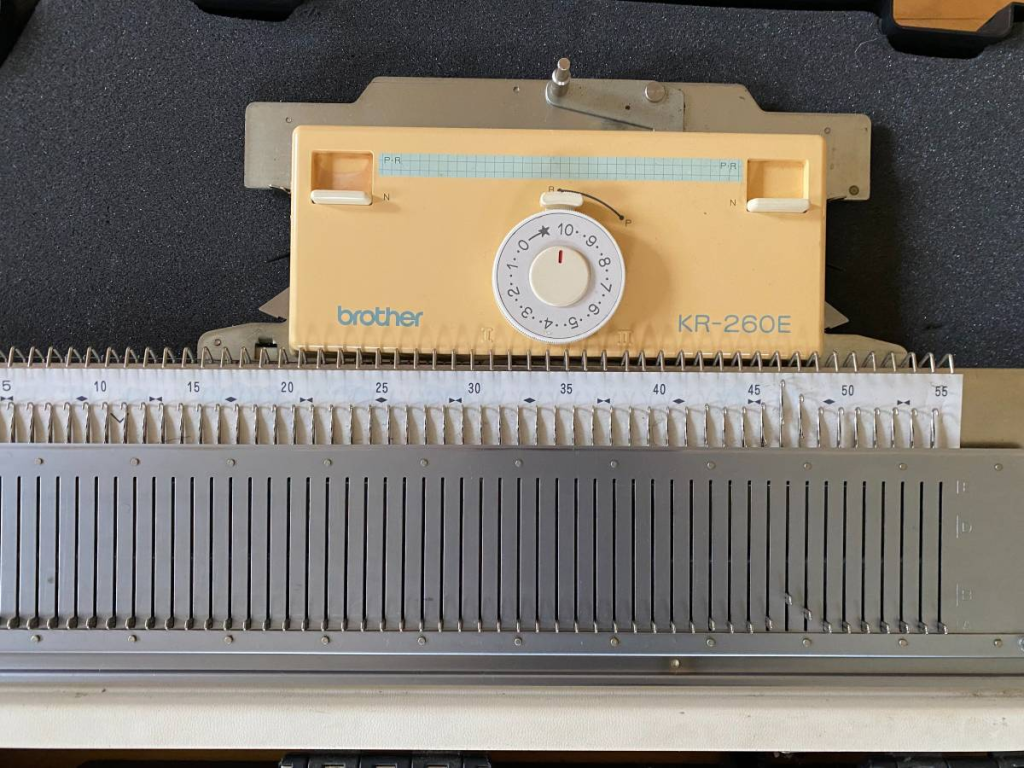
The carriage is simple and has all standard knobs and levers (refer to the manual for details).
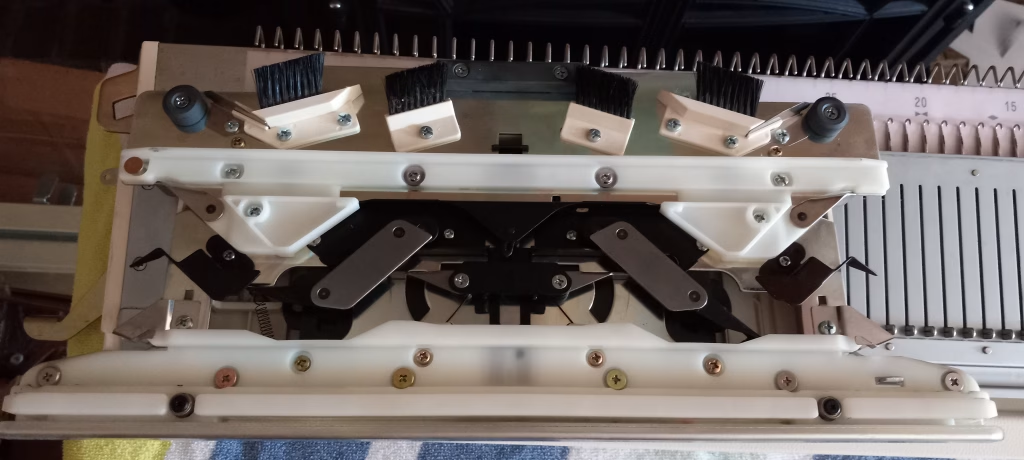
Unfortunately, the bulky KR260 ribber does not have lili buttons to “automatically” knit double bed jacquard. So, a lot of hand needle selection is required.
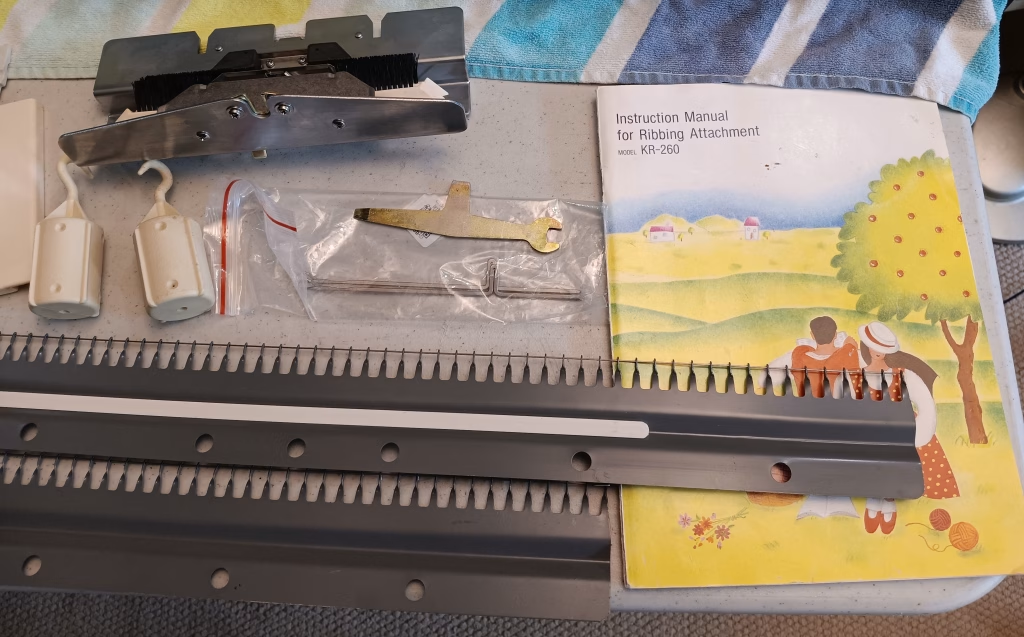
Brother KR260e can be used with the corresponding machine with other accessories: KRC-900 and KRC-1100M color changers,
Because I had a chance to work on KR260 (watch a video of my tests), thus, I have a first-hand experience to judge the pros and cons of this attachment.
Pros:
- easy to use, simple to install – just follow the steps in the manual
- spare parts (including needles, carriages, and connecting arms) are easily available on the second-hand and new market
- like its matching knitting machines, KH260 and KH270, capable of knitting with thicker yarns
- well-written instruction manual
- very straightforward carriage threading (with yarn) process.
- the racking lever allows knitting wave-racking patterns
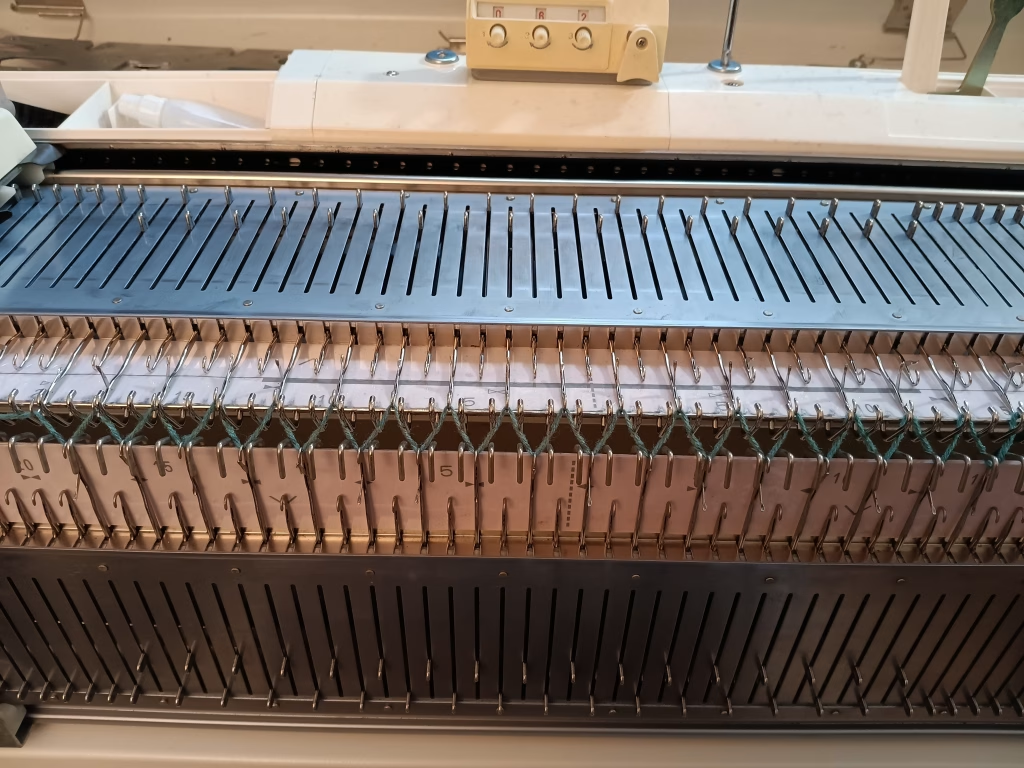
Cons:
- hard to find and thus, very desirable
- cant do automatic double bed jacquard (no lili buttons like in KR850 ribber for standard machines); lots of manual needle selection is required
- The retaining bar is not a plastic strip (like in standard-gauge ribbers). It is metal but contains a spongy strip. This sponge strip needs to be replaced regularly (every 6-12 month depending on use and degree of regular oiling)
- unlikes its standard-gauge counterparts, KR260 ribber requires a retaining bar with a sponge, which needs to be replaced every 6-10 months
- plastic components are prone to UV damage (see the picture of the KR260e carriage above – the yellow color is due to the sun light damage)
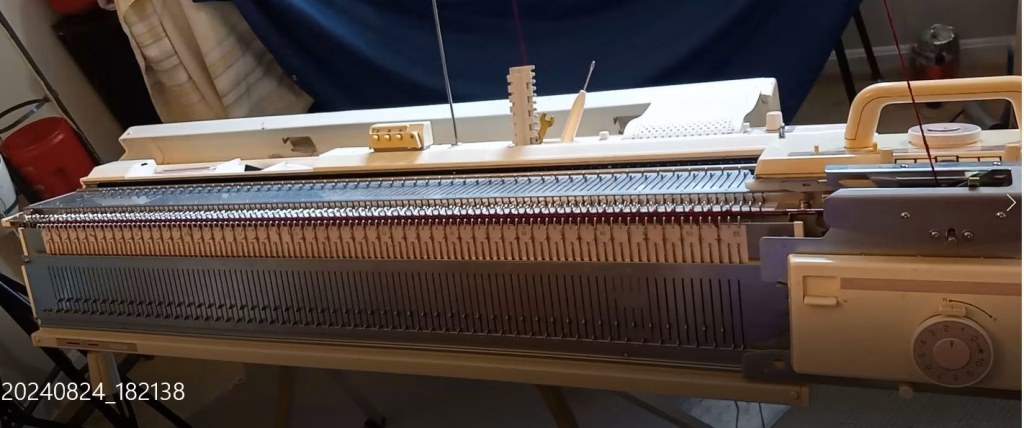
If you purchased this ribber in a rough shape, check my article on the steps I take while cleaning and servicing ribbers, especially those showing some rust.
If you have a well-serviced ribber, check the steps I take while testing the robbers.
Having your main knitting machine accessories with a ribber will bring your knitting skills to the next level. Not only you will create beautiful ribbing on sleeves and necks but you can also knit wider panels and even socks. Just be open-minded because adding ribber also adds a level of complexity and a myriad of things to remember to do and to keep track of. But at the end of the day, it will only make you a better machine knitter.
Happy Knitting!